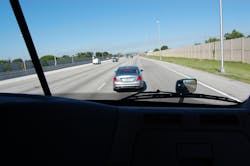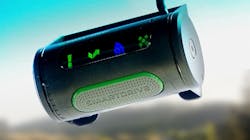Fleet exoneration: Using video to determine truck accident liability
Inattention, excessive speed, failure to yield, and unsafe lane changes are among the top causes of truck collisions, according to the National Highway Traffic Safety Administration (NHTSA). For fleet managers, preventing collisions caused by their own drivers can be quite challenging because risk factors must be measured before an accident occurs.
But what happens when a crash isn’t the truck driver’s fault? In fact, a Fleet Owner whitepaper on video-based safety, sponsored by SmartDrive, found that even though truckers are blamed for most of the crashes that occur in the U.S., 80% of those crashes are actually the fault of car drivers.
This, according to two fleet safety experts, is where video-based safety comes into play. During Fleet Owner’s July 27 webinar (sponsored by SmartDrive) titled Using Video for Accident Reconstruction, Pre-Litigation and Liability Determination, speakers Angie Leathers, litigation coordinator for Avertitt Express, and Will Partenheimer, accident reconstructionist at Bloomberg Consulting, illustrated data points needed for reconstruction, specific examples of accidents and driver exonerations, and best practices for using video to determine liability.
“We are finding more and more surveillance cameras in areas around where accidents are occurring,” stated Partenheimer, who has been in the accident reconstruction and fleet safety field for over 24 years. “States and highway authorities have traffic cameras in place, so we’re also going to be looking to see if there is a traffic camera that captured that incident.”
He added that accident reconstructionists are seeing more and more bystander videos and forward-looking video and driver-facing video in truck cabs. And that video footage is one of the first places investigators will look to determine liability.
Averitt Express recently deployed the SmartDrive video-based safety system in its operations and has been working with Partenheimer to use data from its fleet’s electronic control modules (ECM) and video technology in pre-litigation.
“Most of us agree that video is one of the most reliable resources for establishing liability,” Leathers said. “I don’t know that it’s absolutely the most valuable. Just because you have video doesn’t mean you don’t necessarily have to continue with an investigation. But I have found that if you do have video it often directs the path of the investigation. It shows us what direction we might need to go in based on the facts that we find in the video.”
According to Partenheimer and Leathers, video data becomes important during an investigation when determining:
- Speed of host unit
- Real time, or the ECM data from the truck
- Brake switch status: Reconstructionists use this data to see when the driver puts his or her foot on the brake
- Percent of throttle and engine load: Leathers said this information is used to determine if a driver was on cruise control, which becomes particularly relevant in a distracted driving allegation
- Safety systems engaged: Reveals if lane departure warnings were deployed and shows the position and movements of other vehicles and traffic signals so investigators don’t have to rely on the witnesses
“If you have a video system, you have to know where the speed data is coming from and how it is attained from that system,” Partenheimer explained. “If you have video equipment you really have to know what you’re doing because you’re going to have situations in court where the other side is going to attack your speed and they’re going to say well how do you know it’s valid, and you’re going to have to be able to articulate that.”
Video could also help exonerate carriers and their drivers when they aren’t at fault. According to one in three respondents surveyed for the Fleet Owner and SmartDrive whitepaper, video safety systems were instrumental in at least 25% of their exonerations, and 43% said video systems saved time spent on claims processes.
“People don’t always see all of an incident,” Partenheimer noted. “Without video evidence you’re going to have issues with the court and law enforcement taking sides with the witness more than anything else.”
“Video will be your most prevalent source for determining liability and it might be your most reliable witness,” Leathers added.
According to Leathers, here are some of the best practices Averitt has found when it began implementing its own video-safety program:
- Review video as soon as practical following an accident to determine liability.
- Create and require a nondisclosure and confidentiality agreement for sharing video with third parties to prevent dissemination of your videos.
- Make a company decision on whether to be cooperative with law enforcement and voluntarily provide video or require a subpoena.
- Create a video retention policy for use in defense of spoliation claims regarding your video.
- Consider your routine internal communications on sharing video and whether or not you have your counsel involved to protect the video if necessary.
About the Author

Cristina Commendatore
Cristina Commendatore is a past FleetOwner editor-in-chief. She wrote for the publication from 2015 to 2023.

